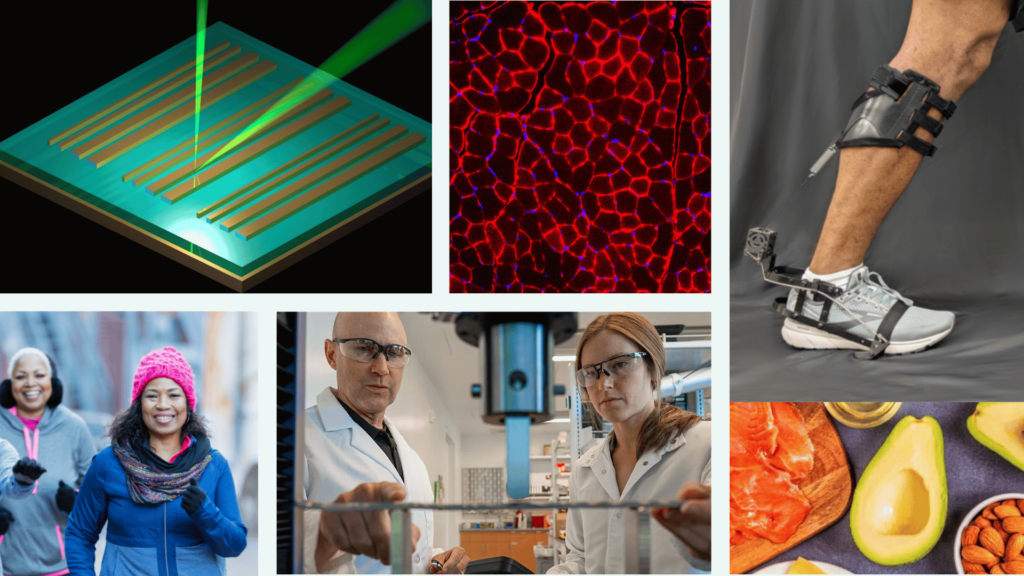Spatial transcriptomics a promising tool to explore chronic muscle injuries
Collaborators
Chronic rotator cuff tears – where the muscles and tendons surrounding the shoulder joint break down with regular use – affect approximately 50% of the population over 50 years of age. They’re particularly problematic in overhead athletes, such as baseball pitchers and volleyball players.
To better understand the molecular and tissue-level changes that occur during injury to help create more effective interventions for athletes with chronic muscle injuries, Wu Tsai Human Performance Alliance postdoctoral fellow Severin Ruoss and colleagues at UC San Diego developed a method to measure gene activity in skeletal muscle in ways that we couldn’t measure before.
Until recently, researchers faced major challenges in mapping gene activity in skeletal muscle. For most tissues, investigators can use single-cell RNA sequencing to track changes in cell numbers and types. However, muscles cells are often several centimeters long and exceed the length compatible with this technology.
“The muscle cells are too big to be encapsulated into single-cell droplets, which is necessary for this technique,” said Ruoss. “Additionally, muscle tissue composition changes over time, which further complicates the interpretation of gene activity from the whole muscle.”
Similarly, single-nucleus RNA sequencing is not an ideal option because the maps generated of muscle fibers are incomplete. Therefore, the team sought to fill a much-needed gap in techniques for studying skeletal muscle. To understand the pathobiology of these tears, the team used spatial transcriptomics – a technology first invented in 2016 that allows scientists to measure and map the physical locations of gene activity in a tissue sample.
Their work demonstrated the potential of this technology – specifically the Visium platform – to investigate skeletal muscle conditions in rabbit models, including in tissues that were stored at −80°C for over six years. When the team compared results from freshly frozen samples to tissues that were frozen for six years, they found no significant difference in the quality of the data.
Although “this technology does not currently offer single-cell resolution and it remains to be established how well the analyzed section extrapolates to the muscle biopsy it was derived from,” said Ruoss, “the technology is relatively user-friendly, which will hopefully encourage other translational scientists to use it.”
The UC San Diego team is part of the Wu Tsai Human Performance Alliance’s Innovation Hub, the Triton Center for Performance and Injury Science. The Center focuses on designing next-generation tools to acquire high-value tissue and cell samples from athletes and creating a repository of the resulting biospecimens to further discoveries that improve the health of athletes and the public.
Read the full scientific study in the Journal of Orthopaedic Surgery and Research.
Latest News

May 29, 2025
Is exercise before sleep linked with poorer sleep?

May 23, 2025
Skeletal stem cells key to stronger bones, better healing

March 13, 2025
Wu Tsai Human Performance Alliance Research Round-Up – March 2025
Get Engaged
Join our mailing list to receive the latest information and updates on the Wu Tsai Human Performance Alliance.
